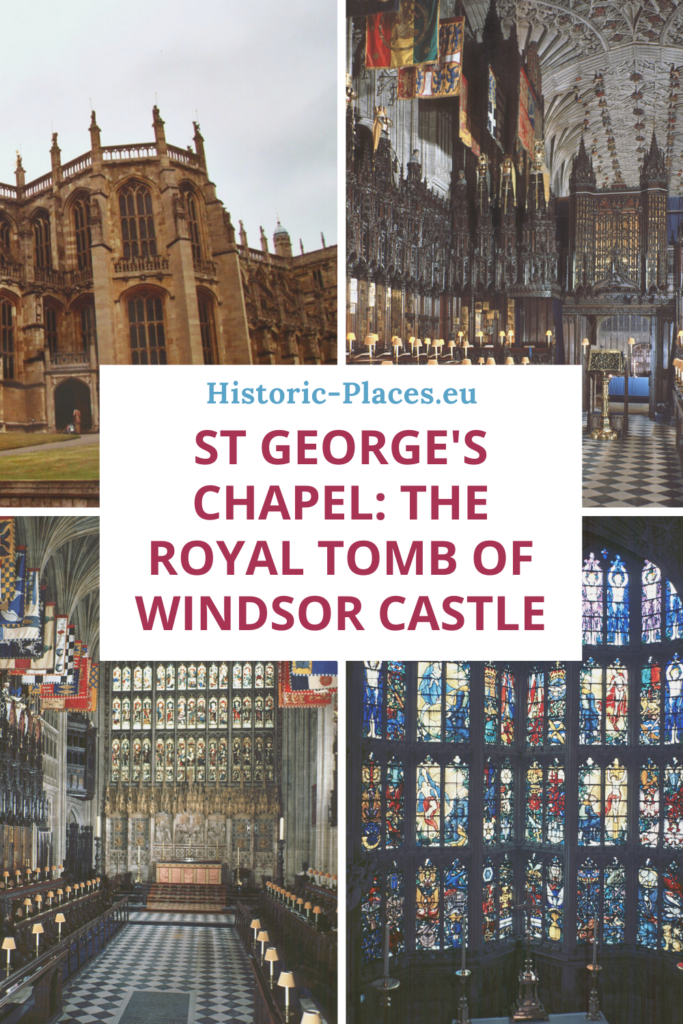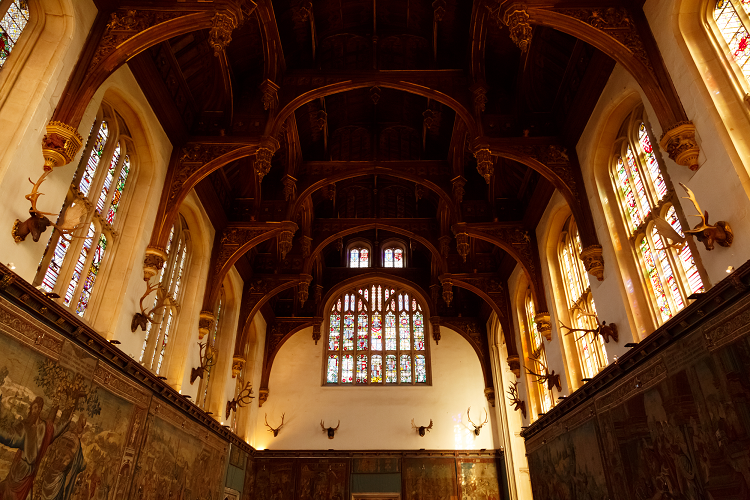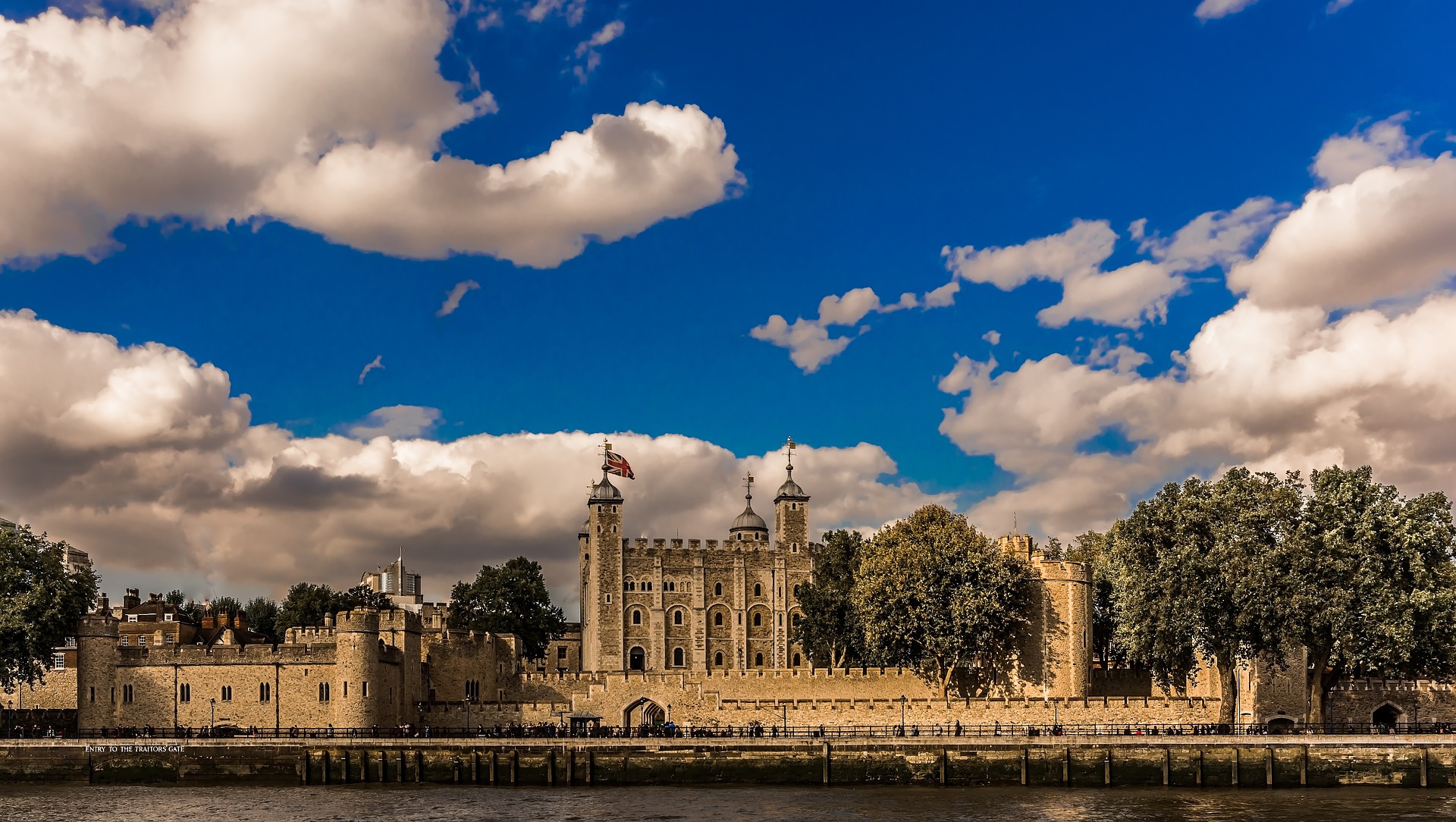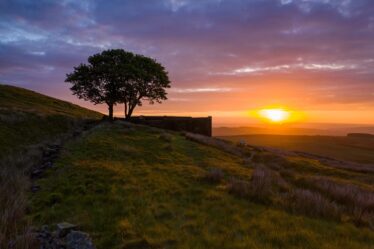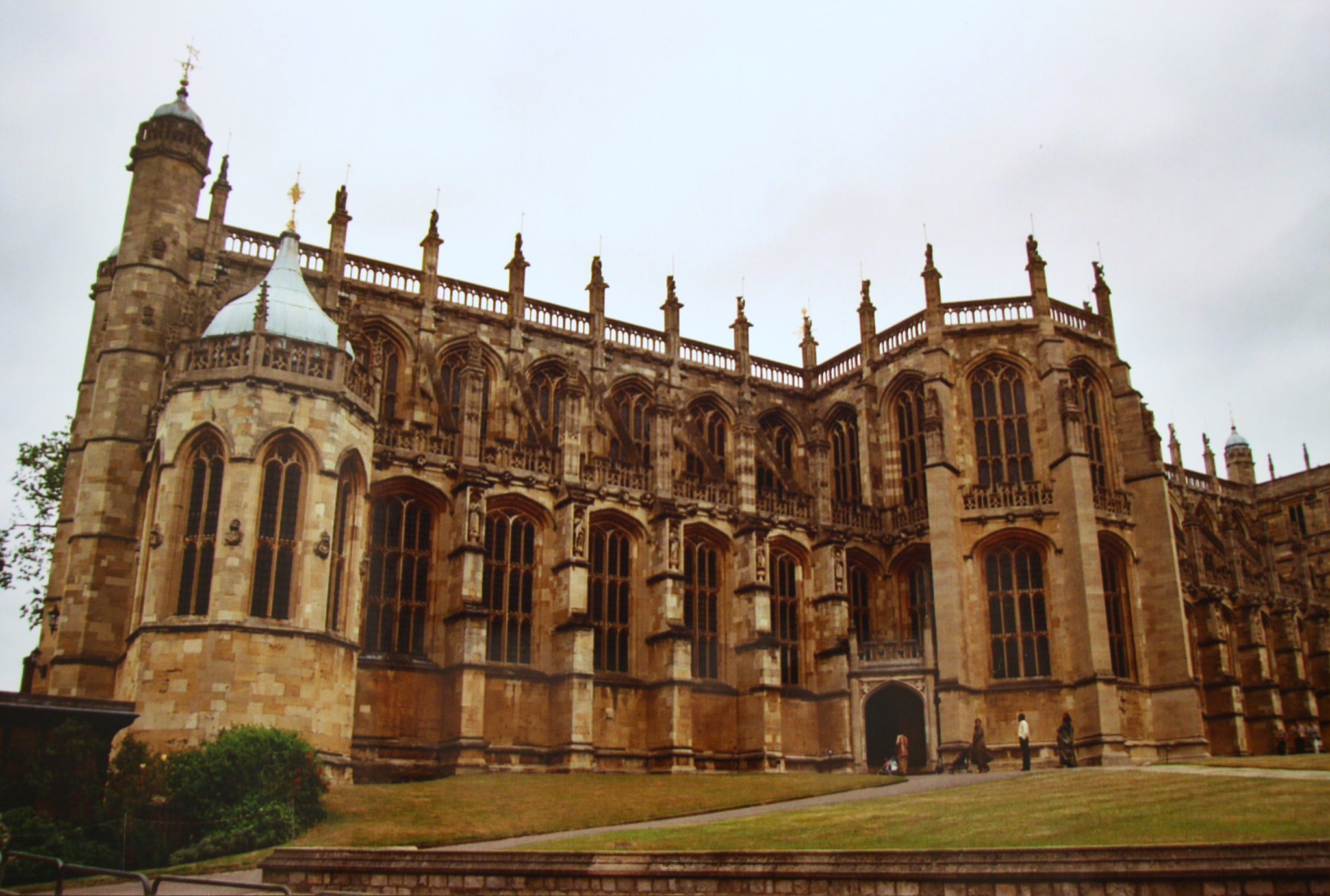
On September 19, 2022, Queen Elizabeth II was laid to rest at St George’s Chapel in Windsor Castle. The Queen, who reigned for over 70 years, passed away on September 8th at the age of 96.
She thus outlived her husband Prince Philip, Duke of Edinburgh by almost exactly 17 months. Prince Philip died on the 9th of April 2021 at the age of 99 and was also laid to eternal rest in St George’s Chapel. On the current occasion, I have therefore revised the article that I wrote on the funeral of Prince Philip.
As the chapel of one of the royal family’s most important castles, to which it even owes its family name, St. George’s Chapel has a special significance. However, the chapel has been full of history and great names not only since the Windsors began ruling the country. That’s why today I’m taking you on a tour of St George’s Chapel and showing you where Elizabeth and Philip found their final resting place together.
History of the chapel
The predecessor of today’s chapel was built as early as the 13th century. Like many holy places at the time, it was dedicated to the Anglo-Saxon king and saint Edward the Confessor. The adjoining Windsor Castle – or at least its predecessor – was built at the time of William the Conqueror in the 11th century. Royal history thus goes back almost 1000 years on this property.
The knight-king Edward III, who was born at Windsor Castle, endowed the collegiate monastery of St George at Windsor Castle in 1348 and had the adjoining chapel enlarged and dedicated to St George, the national saint of England. Edward IV commissioned the present chapel in 1475, and it was completed under Henry VIII in 1528. Since its time, important events have taken place in St George’s Chapel, and many members of the royal family of high rank have been buried there.

St George’s Chapel: Tombs
The list of tombs at St George’s Chapel reads like a Who’s Who of British royal history.
Henry VIII and his third wife, Jane Seymour, lie in a crypt under the chancel of the chapel, beneath a plain marble slab placed there in 1837 under William IV. Originally, Henry VIII had planned to be buried in an elaborate monument. Part of it, a black marble sarcophagus, had actually been made for him by his disgraced chancellor, Thomas Wolsey. Henry secured the sarcophagus for himself, but could not rest in it either. His monument had not been completed at the time of his death. Curious fact: Eventually this sarcophagus was used for Lord Horatio Nelson in 1805 and today can be seen in St. Paul’s Cathedral in London.
Jane, on the other hand, does not lie in St George’s Chapel completely, because her heart and internal organs are buried in Hampton Court Palace, where she gave birth to her son and died soon after. Not a particularly unusual procedure at a time when a body still laid in state for some time.
Henry and Jane share their tomb with King Charles I, who was executed after the English Civil War. Also in this tomb is a tiny coffin containing the remains of one of Queen Anne’s many stillborn children or children who died shortly after birth. The last queen of the House of Stuart had a particularly tragic life in this regard. Out of 17 pregnancies, only one child survived infancy – and died at the age of 11.
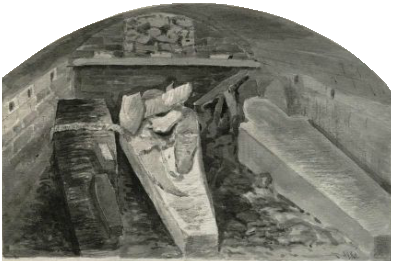
Also under the floor of the choir lies the royal burial vault, the Royal Vault, built in the early 19th century under George III. Since then, more than 20 members of the royal family have been buried there, including George III’s wife and several children, the king himself, his sons George IV and William IV, his granddaughter Charlotte, who died tragically young, and her stillborn child.
Prince Philip was also buried here, but was moved to rest by his wife’s side on September 19th after her funeral.
There are very few pictures of the Royal Vault, for obvious reasons, and none from the recent past. In this video you can see some older footage and learn more about the Royal Vault:
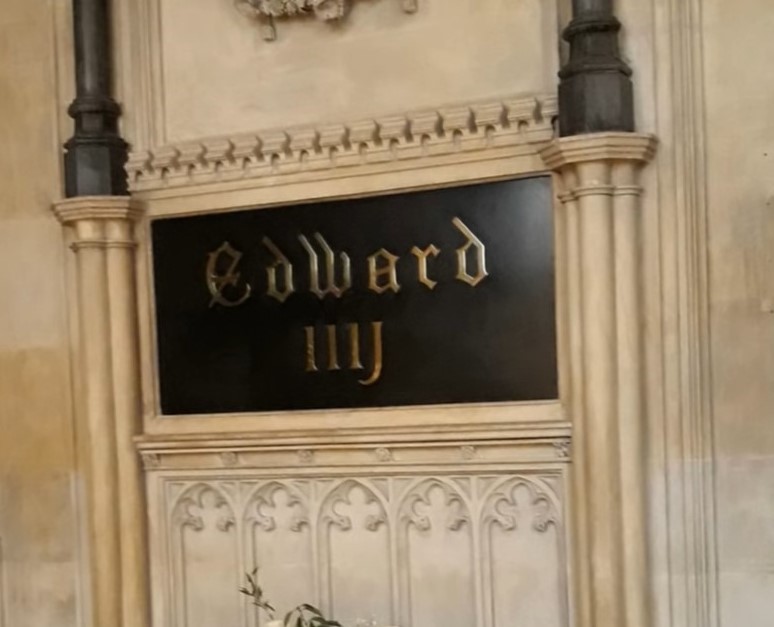
One of the chapel’s benefactors also found his final resting place there: Edward IV, the great champion of the Wars of the Roses. He lies to the left of the altar, along with his wife Elizabeth Woodville. A mystery is found here: When workmen accidentally opened the tomb of Edward and Elizabeth in 1789, they discovered a small adjacent tomb with two children’s coffins. These were believed to be George and Mary Plantagenet, two children of the couple who died young. Their names were placed on the tomb and the tomb was sealed.
However, during work on the construction of the Royal Vault some 15 years later, two lead coffins were found inscribed with the names of Mary and George Plantagenet. They were simply taken to their parents’ crypt without trying to find out what the two children’s coffins that were already there were all about. Since then, some have suspected that the unidentified children are the missing princes in the Tower, Edward and Richard.
On the other side of the altar rests the adversary of Edward IV. , Henry VI, as well as Edward VII and his wife Alexandra of Denmark.
Also buried in the chapel are George V and his wife Mary of Teck, grandparents of Elizabeth II, and Charles Brandon, close friend of Henry VIII.
King George VI. Memorial Chapel
The chapel was commissioned by Queen Elizabeth II in 1962 to create a resting place for her father George VI. She commissioned architects to design the chapel to accommodate the remains of three monarchs and their spouses. George’s death was unexpected, and no special resting place had been designated for him before his death. Therefore, he was initially buried in the Royal Vault. As there was no room in St George’s Chapel for another burial vault, a solution was found by building an additional Chantry Chapel on the outside of the Chapel. This was the first addition to St George’s Chapel since 1504.
George VI was reburied in the chapel in 1969. The ashes of George’s youngest daughter, Princess Margaret, were first interred in the Royal Vault at St George’s Chapel on February 15th, 2002. Margaret was the first member of the Royal Family to be cremated since Princess Louise, daughter of Queen Victoria, in 1939. Margaret was cremated to ensure that her remains could be placed in the small chapel. Her mother, “Queen Mum,” was interred in the chapel on April 9th, 2002. Margaret’s ashes were interred in her parents’ vault at the same time.
Elizabeth II was buried in the chapel on Sept. 19, 2022, after her state funeral at Westminster Abbey. Prince Philip was reburied in the chapel on the same day.
The Order of the Garter
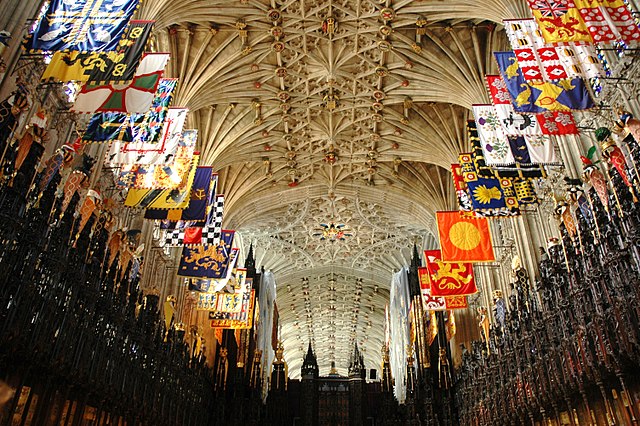
The Order of the Garter is the highest order of knighthood in the United Kingdom. It has been closely associated with St George’s Chapel since its foundation in 1348, also by Edward III. The chancel of the chapel bears witness to the long history of the Order of the Garter. There the banners of current members hang, as well as the escutcheons of over 700 former members.
The motto of the Order of the Garter is “Honi soit qui mal y pense” (“A rogue who thinks evil of it”), an exclamation said to be related to one of the Order’s many founding legends. Often, these legends were about a lost garter of Edward III’s mistress. The monarch, the heir to the throne, and a maximum of 24 knights are members of the Order. Admission has been open to both men and women from the beginning. But women have been equal members of the Order of the Garter only since 1987.
One of the knights is the Usher of the Black Rod, who traditionally accompanies the monarch to the state opening of Parliament. There, the knight has the task of summoning members of the House of Commons to the House of Lords to hear the monarch’s speech. Currently, for the first time, a woman holds this office.
The number 24 does not include members of the royal family or foreign members. Thus, all of the Queen’s children, as well as Prince William and several other relatives, are members of the Order. Prince William was the 1000th member in 2008.
Among the foreign members are the monarchs of Denmark, Sweden, Norway, Spain, the Netherlands and Japan.
Among the members of past centuries are prominent names such as John of Gaunt (founder of the House of Lancaster), Richard Neville, Earl of Warwick (the so-called “kingmaker” at the time of the Wars of the Roses), Margaret Beaufort (Henry VII’s mother), Arthur Tudor (Henry VII’s son), Thomas Boleyn (Henry VII’s father), and the King of England. ), Thomas Boleyn (father of Anne Boleyn), Henry Fitzroy (illegitimate son of Henry VIII), Thomas Cromwell (close advisor of Henry VIII), Robert Dudley (confidant of Elizabeth I), William Cecil (secretary of state of Elizabeth I) or Prince Albert of Saxe-Coburg and Gotha (husband of Queen Victoria).
Garter Day is held every year in June, when the Knights of the Order meet at Windsor Castle and attend services together. New members of the Order are also admitted at this time, a process that neither the public nor the press are allowed to observe.
Royal weddings
St George’s Chapel, in addition to being a place full of history, is still a place of worship. When the Queen stays at Windsor, she attends services there. Since Victorian times, numerous royal weddings have taken place in the chapel. The children of Queen Victoria and Prince Albert entered into marriage here, including the future King Edward VII, who succeeded his mother to the throne in 1901.
In 2005, Prince Charles married his wife Camilla in a civil ceremony. But the couple received their church blessing at St George’s Chapel. Why not a church wedding? Only three years earlier, the Anglican Church first allowed divorcees to remarry – they probably wanted to avoid too much publicity.
The younger royals, who are further away from the throne, also married in the chapel. For example, Prince Edward, the Queen’s youngest son, to Sophie Rhys-Jones in 1999, Peter Philips, son of Princess Anne, to Autumn Kelly in 2008, and more recently Princess Eugenie, daughter of Prince Andrew, to Jack Brooksbank in 2018.
The most prominent marriage in St George’s Chapel in the recent past was Prince Harry to U.S. actress Meghan Markle, which broke with so many traditions. Harry was also baptized in the chapel.
How to visit St George’s Chapel
Visitors to Windsor Castle can visit St George’s Chapel at certain times for tours and also for church services. Due to the current situation, it is advisable to check the current opening hours.
Address:
Windsor SL4 1NJ, United Kingdom.
Pin for later!
